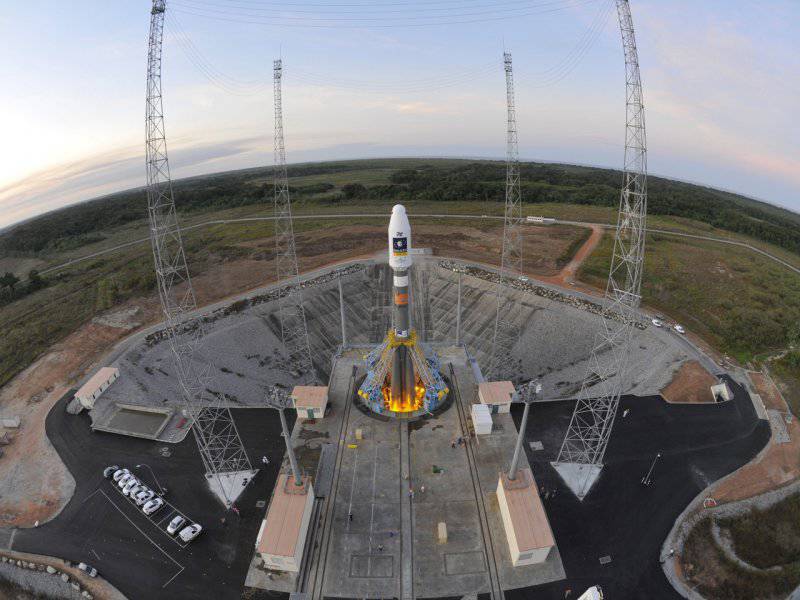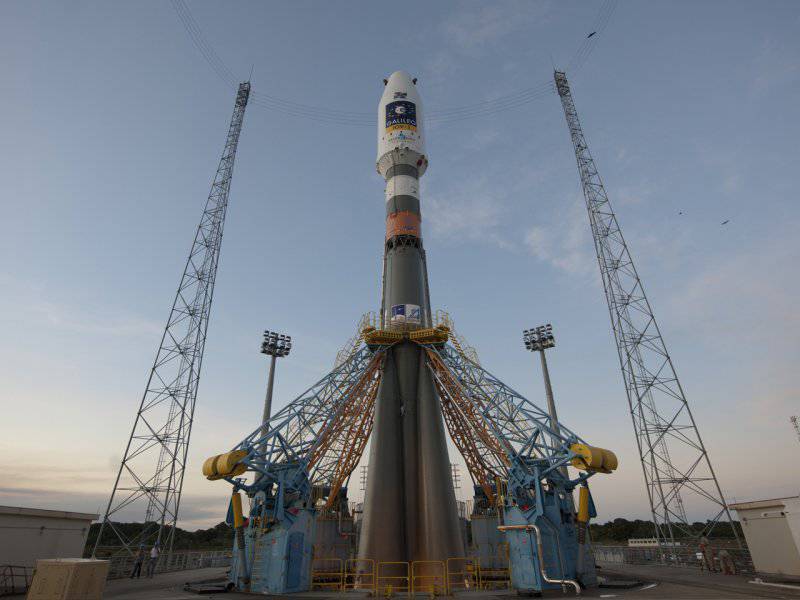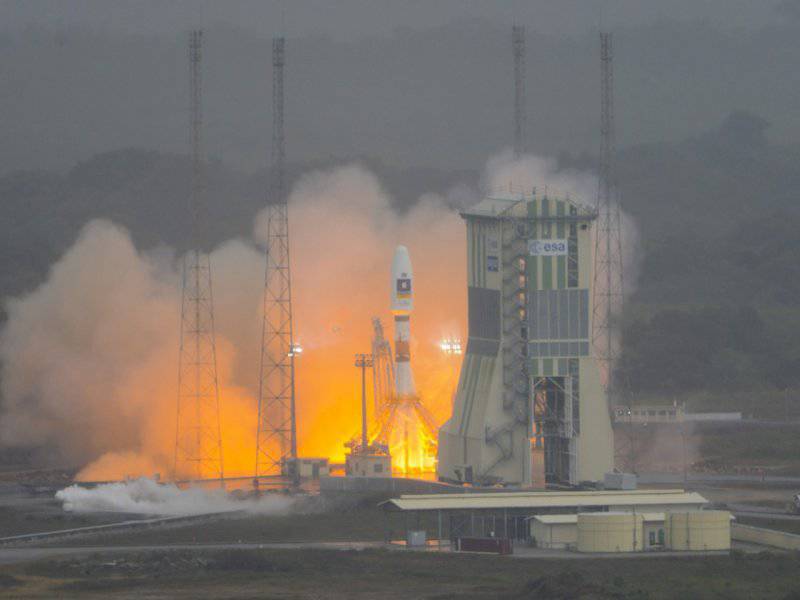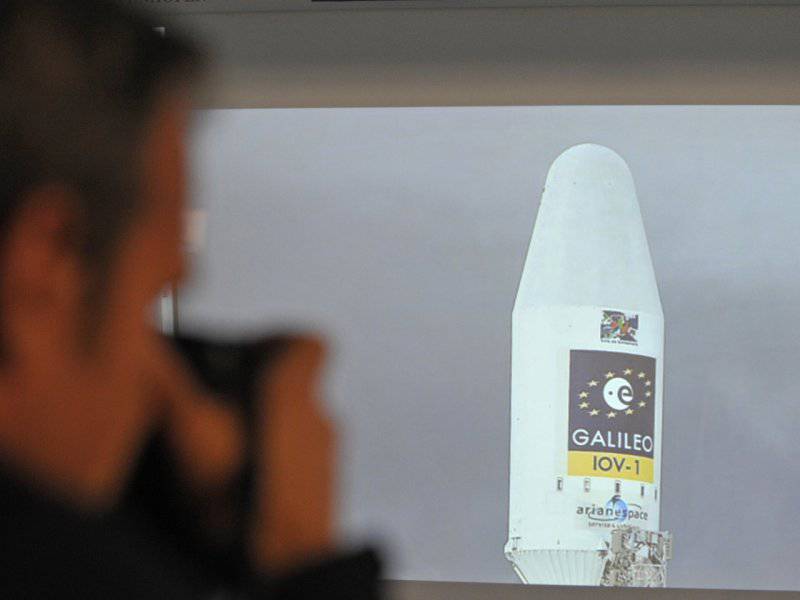"Union" in Guiana
October 21 international cooperation in space exploration continued with another launch. This time, the Soyuz family launch vehicle launched two European satellites into orbit. It would seem how many times this has already happened and how long it will be. But it is this launch that is notable for several “trifles” at once. First, it was the first launch of a Russian rocket from the French Kourou cosmodrome. Secondly, it was the first launch of the Soyuz-STB rocket. And domestic missiles will fly back into space from the Guiana cosmodrome. The next launch (Soyuz-STA) is scheduled for the second decade of December. All in all, a contract for a dozen launches has been signed.
It should be noted that the launches of the "Unions" with Kuru are beneficial to all. Anyway, due to its location, the French space center is extremely beneficial for almost all launches. Kourou is located on 5 ° 3 'north latitude. Those. from the spaceport to the equator just over 500 kilometers. Thus, only due to the rotation of the planet, the launch vehicle receives an additional speed of more than 1600 km / h. The increase in speed makes it possible to increase the payload of carriers - by 15% compared to the US space center at Cape Canaveral and by 40% compared to Baikonur. Another natural feature of Kourou and Guyana in general is the safety of launches. There are no hurricanes and earthquakes in these places, the cosmodrome area is sparsely populated, and all launches are carried eastward. Therefore, in the event of accidents, only some part of the Atlantic Ocean is at risk.
The Kourou space center is now owned by the European Space Agency (ESA), so the launches of European satellites made on it do not cause questions. Specifically, on 21, two spacecraft of the European Galileo navigation system, called “Tiis” and “Natalia”, were sent into orbit. Two more satellites will "go" into space on the "Soyuz-ST" next year. Recall that the Galileo system is a joint project of the European Union and ESA. With the launch of October 21, the third phase of the construction of this system began, which implies the construction of the ground infrastructure of the system and the launch into orbit of all 30 satellites required for Galileo operation. It is planned that in the future space vehicles will also be launched in pairs, and there is every reason to believe that our Unions-ST will do this.
The Soyuz-ST launch vehicle was created in GSKB-Progress based on Soyuz-2. Basically, the design of the missiles is similar, but there are a number of differences. The main difference of the rocket itself lies in the following: in the assembly and test complex (MIC) of the Kourou cosmodrome, the head end with the payload, upper stage (if needed) and fairing are not mounted on the carrier. It is assembled separately in a vertical position and mounted on a carrier directly on the launch pad. The fact is that European space vehicles are made with a vertical "orientation", and all Russian rockets, according to a similar technical "tradition," are assembled in a horizontal position. If you install the head on the carrier directly in the MIC, the cargo may be damaged during transportation and the rocket is installed on the launch facility. Due to the separate installation of the head part, the starting complex was modified. After the removal and installation of the rocket on the launch pad, the mobile service tower literally runs into the launch complex. She covers a rocket and people working on it from tropical heat and rain. At the same time, the tower has elevators, cranes and other equipment necessary to work with the rocket as a whole and the installation of the head compartment in particular. Also under the roof produce and refueling missiles. The tower for servicing the "Unions", which is currently the tallest structure on the Kourou, is set aside from the launch complex just before launch.
The launch complex itself differs from its counterparts from Plesetsk or Baikonur by a number of systems, primarily cables. At domestic launch sites, launch is made from a bunker located at a relatively short distance from the launch pad. On the Kuru, start management is carried out from a normal building, quite remote from the launch pad. This moment required some refinement of control systems. At present, there is unverified information about possible, in the future, automated refueling of carrier tanks. On the “old” launch sites for the “Soyuz-2” this is impossible: their starting complex rotates around the vertical axis and makes it difficult to use automatic systems. The launch complex at Kourou, in turn, is made “stationary” and all refueling points are in the same places, which does not interfere with automation.
The first joint Russian-French launch was not without unpleasant incidents. Initially, the launch was planned for the 20 number, but problems started when refueling the upper unit “Frigate”. As Jean-Yves Legal, president of Arianespace, explained, automatic fuel delivery was the culprit. It was decided to interrupt the refueling and eliminate all problems. However, the fuel from the tanks had to be drained. But experts quickly determined what was happening and the launch was postponed just a day - to October 21, in 14: 30 Moscow time (7: 30 local time).
Preparation for the postponed launch was successful, and the launch was made at the appointed time. About half an hour before the launch, the cosmodrome began to rain slightly, but it had no effect on carrying out all the necessary procedures: the rocket, as planned, broke away from the launch pad at half past seven in local time. Approximately half an hour later, the first start-up of the “Frigate” upper stage occurred, and around 11: 10 (18: 10 in Moscow) - the second. After another 9-10 minutes over the Indian Ocean there was a separation of satellites. The preparation and launch of Soyuz-STB was broadcast live on the websites of Roskosmos and Arianespace.
The next launch of the Soyuz-ST version “A” is to be held on 16-20 this December.




Information